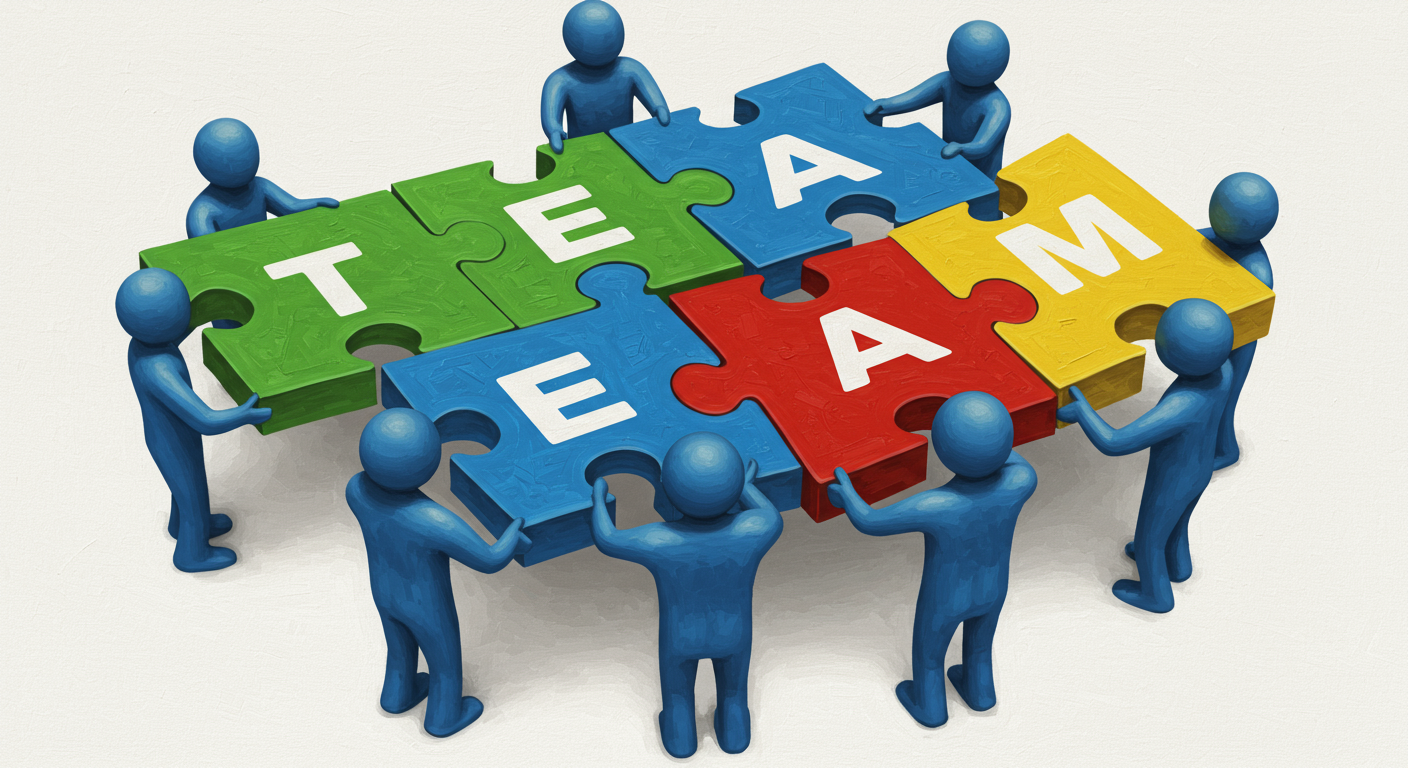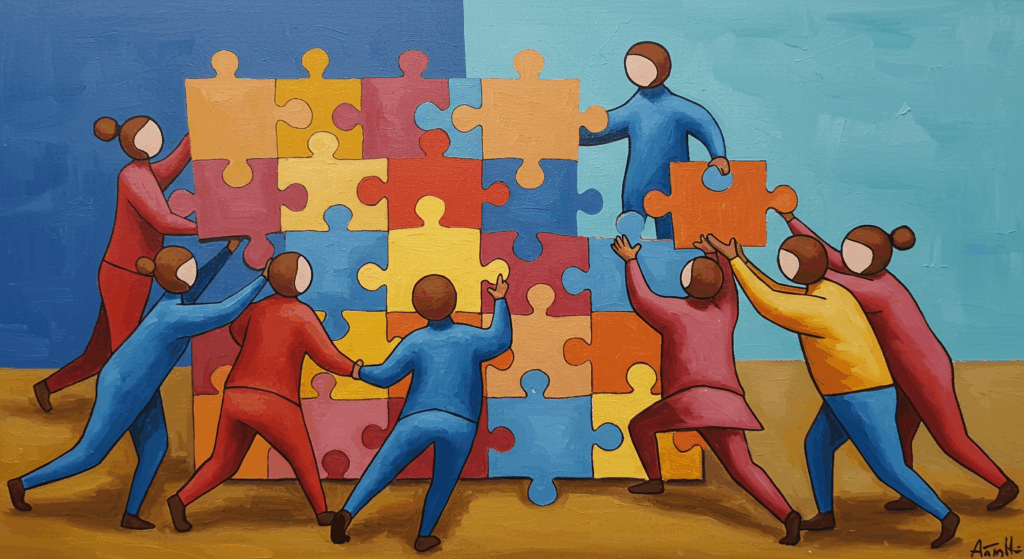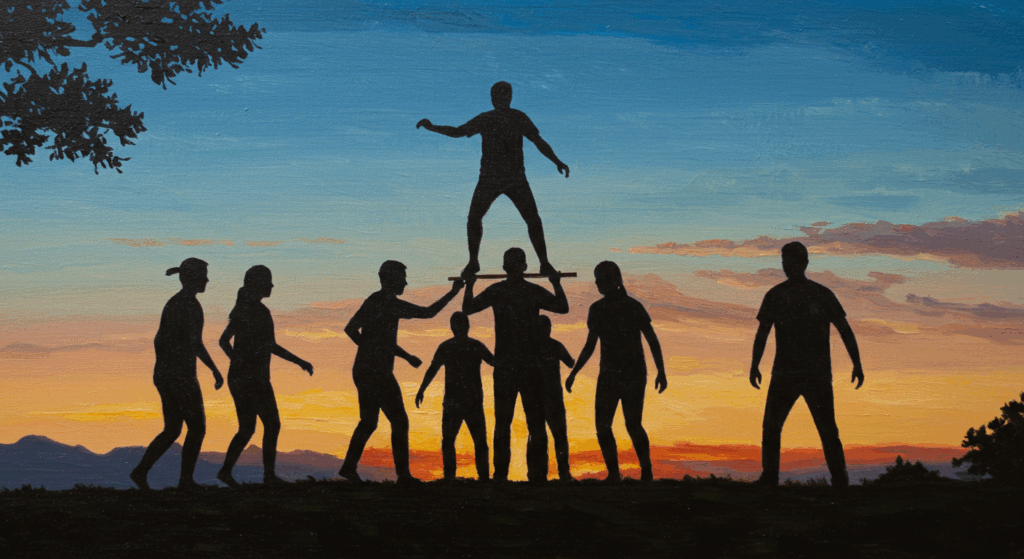Let’s be honest: “team bonding” can sound like one of those corporate buzzwords that live in PowerPoint slides and die in real life. The wrong kind of activity gives you forced smiles, sticky name tags, and a group photo nobody wants on LinkedIn. But the right kind? It makes work feel lighter. People help each other more. Projects move faster. And yeah—engagement, productivity, interaction—those magic words—actually go up in a way you can feel.
This guide is everything I wish someone handed me when I started running team activities: not cheesy, not awkward, and definitely not the “trust fall into Chad’s arms” era. Think: quick wins, low prep, and options for every vibe—remote, hybrid, or in-person. We’ll talk rituals, mini games, problem-solving sprints, creative play, micro-learning, and ways to strengthen psychological safety without turning the whole thing into a therapy session. If you’re a manager, a lead, or just the “let’s make this less blah” person, you’re in the right tab.
Grab a coffee, put on your comfort playlist (I’m on my third loop of a lo-fi mix that sounds like a rainy Tuesday), and let’s get into practical team bonding activities for work that won’t make anyone roll their eyes.
Why Team Bonding Works (When It’s Done Right)
From “Me” to “We” without the cringe
Teams win when people communicate early, ask for help before it’s urgent, and feel safe sharing ideas that aren’t 100% perfect. Bonding activities are basically shortcuts to that kind of culture. They create shared language, show off folks’ strengths outside their job titles, and make it normal to ask “wait—can you clarify?” instead of pretending we got it. That’s where engagement grows. And from engagement comes real productivity. Not the “log more hours,” but the “move the needle without burning out” kind.
Small beats grand
You don’t need a two-day offsite in Bali (though, ngl, sounds incredible). You need consistent moments—10–45 minutes—that build familiarity and trust. Micro-moments stack. Think daily rituals > annual extravaganzas. Those tiny check-ins create more interaction than one mega event.
People love practical
If an activity has a clear why (“we’re de-risking a launch,” “we’re celebrating wins,” “we’re sharing knowledge”), folks participate with actual enthusiasm instead of survival mode. Tie activities to real work goals—better onboarding, faster handoffs, clearer priorities—and you’ll see motivation spike.
The Vibe Check: Ground Rules Before You Start
- Make it optional, but irresistible. Honor people’s social bandwidth. Offer opt-in roles—note-taker, meme curator, timer, facilitator—so introverts aren’t railroaded.
- Time-box like a pro. Tell folks “this will take 20 minutes, done at :40.” Start on time, end on time. Predictability = trust.
- Explain the why in one sentence. Example: “We’re doing ‘Bug Safari’ to improve interaction and reduce the 5pm fire drills.”
- Rotate ownership. When one person always hosts, it becomes “their thing.” Rotate to make it “our ritual.”
- Respect difference. Not everyone drinks, wants to be filmed, or shares personal stuff. Choose inclusive prompts.
- Collect micro-feedback. One emoji + one sentence after each activity. Keep what works, ditch what doesn’t. That’s how engagement stays high.
Fast Warm-Ups (5–10 Minutes) That Don’t Feel Awkward
1) One-Word Weather
How it works: Everyone shares their “work weather” in one word + one line: “Sunny—just finished a big task.”
Why it works: Quick emotional check-in without oversharing. Helps a lead sense energy before assigning work.
Boosts: interaction, empathy, light alignment.
2) Two Truths & a Work Lie (Micro Edition)
How it works: Two true facts about your work life + one silly lie. “I once deleted prod,” “I automated my standup,” “I met Beyoncé in the break room.”
Why it works: It’s playful, 90% of people grin, and you learn random yet useful trivia (“oh you script releases?!”).
Boosts: engagement, rapport.
3) 90-Second Wins
How it works: Put two minutes on the clock. Everyone drops one recent win in chat (screenshot if relevant).
Why it works: Recognition fuels productivity. People see progress, not just problems.
Pro tip: Theme it—“tiny automation wins” or “customer thank-yous.”
4) Show-and-Tell: Desk Edition
How it works: Hold up one item from your desk and tell a 10-second story.
Why it works: Humanizes remote teammates. You’ll meet a shocking number of plants and tiny anime figurines.
Boosts: interaction, belonging.
Low-Prep, High-Value Bonding Activities (15–30 Minutes)
5) Problem Post-its (aka “What’s Annoying You?”)
How it works: Everyone anonymously posts one friction point (“handoffs on Fridays are chaos”). The group picks 1–2 to fix in the next week.
Why it works: Turning venting into action makes bonding feel useful.
Boosts: productivity (immediate), engagement (people feel heard).
6) Demo Roulette
How it works: Two volunteers do 5-minute demos—anything helpful: a new shortcut, a Notion template, a Figma plugin, a code lint trick. Rotate weekly.
Why it works: Knowledge sharing = pure interaction. Also you discover the “hidden experts.”
Bonus: Record clips for onboarding.
7) Customer Story Swap
How it works: One person shares a customer story—good, bad, or “omg this email.” Then the team brainstorms “one tiny fix.”
Why it works: Keeps the customer in the room; connects daily tasks to value.
Boosts: engagement (purpose), productivity (fewer repeated mistakes).
8) Emoji Retro
How it works: Classic retro but with emojis:
- ✅ What worked
- 🔁 What to tweak
- 🧰 What we’ll try
Why it works: Making retros shorter and visual keeps energy up.
Cadence: Every 2 weeks; 20 minutes.
9) “Ask Me Anything” with Guardrails
How it works: One teammate volunteers for a 15-minute AMA. Pre-submit questions. Skip sensitive topics.
Why it works: Builds cross-team understanding. Also hilarious when someone asks about your monitor mount obsession.
Boosts: interaction, trust, clarity.
Creative Play That Feeds Collaboration (and Doesn’t Feel Babyish)
10) “Bad Ideas Only” Brainstorm
How it works: For 5 minutes, you’re only allowed to pitch bad ideas (wild, goofy, borderline illwegal—kidding). Then you harvest the seeds of good ones.
Why it works: Reduces fear of judgment and primes creativity.
Example: “Ship release notes as haiku.” → Becomes “shorter release notes with a consistent style.”
Boosts: engagement (it’s fun), productivity (you actually get direction).
11) Playlist Party
How it works: Create a shared Spotify playlist based on a theme: “Deep Focus,” “Pre-Demo Jitters,” “Victory Lap.”
Why it works: Music glues teams together. Also, gentle chaos when death metal meets K-pop.
Pro tip: Let folks opt out if music is distracting.
12) Meme Monday / Gif Friday
How it works: A weekly thread: drop a meme about a shared work moment.
Why it works: Humor, community, and a low-effort interaction that people actually remember.
Rules: Keep it kind, keep it inclusive.
13) Tiny Art Jam
How it works: Give people a prompt (“our Q4 goal as a creature”) and 3 minutes to doodle on virtual canvas or paper. Hold them up on camera.
Why it works: Nonverbal collaboration helps quieter teammates shine.
Outcome: Use the funniest as Slack emojis. You’re welcome.
Collaboration Sprints: Bonding Meets Delivery
14) Pair-and-Ship Hour
How it works: Match people for 60 minutes to ship something tiny—clean a backlog column, refactor one ugly function, finalize microcopy, doc a process.
Why it works: Shared accomplishment = instant bonding.
Boosts: productivity (obviously), engagement (you feel momentum).
15) Bug Safari
How it works: Set a 30-minute bug hunt with a shared score. Each fix or repro is a point.
Why it works: Gamifies the boring stuff. Also surfaces systemic problems to address.
Bonus: Offer a silly prize (digital crown, 🎉 emoji shower).
16) Story Mapping Speed-Run
How it works: 30 minutes to map a user journey on a whiteboard. Identify “moments that matter.” Divvy up owners.
Why it works: Forces alignment across roles—product, design, eng, ops—without a 2-hour meeting.
Boosts: interaction, clarity, faster handoffs.
17) Shadow-a-Teammate
How it works: 45 minutes watching a teammate do their real job (support call, design crit, deployment).
Why it works: Cross-pollination = smarter tradeoffs. Also empathy skyrockets.
Cadence: Monthly pairs.
Rituals That Sustain Engagement All Quarter
18) Monday Map, Friday Brag
How it works:
- Monday Map (10 min): Everyone says their “most important 1–2 outcomes” for the week.
- Friday Brag (10 min): Everyone shares a win + one thing they learned.
Why it works: Ties effort to outcomes, celebrates progress, raises visibility.
Boosts: engagement (meaning), productivity (focus).
19) Gratitude Slack Thread
How it works: A weekly gratitude chain. Tag someone with a specific thank-you (“@Rani’s checklist saved us during Tuesday’s deploy”).
Why it works: Specific praise encourages repeatable behaviors.
Note: Make it opt-in so it doesn’t feel forced.
20) Learning 15
How it works: 15 minute learning share every other week: a video, article summary, or a tiny tutorial.
Why it works: Upskills the team without making it homework.
Boosts: engagement (growth), interaction (Q&A).
21) “No Meeting” Power Block
How it works: Choose a weekly 90-minute block where meetings are banned. Encourage deep work + async check-ins.
Why it works: Reduces burnout and ironically increases collaboration because people have bandwidth to respond with better ideas.
Boosts: productivity in a very real way.
Remote-Friendly Team Bonding (Zero travel, zero awkward hotel carpets)
22) Desk Safari Bingo
How it works: A bingo card of “remote life” squares: dog bark, someone says “you’re on mute,” rescue a tab avalanche, etc.
Why it works: Light, familiar, and moves fast.
Prize: Winner picks next week’s icebreaker.
23) Virtual Escape Lite
How it works: DIY version: 30 minutes of puzzles related to your product or team lore (riddles, ciphers, screenshots).
Why it works: Collaboration under time pressure builds real-world interaction muscles.
Tip: Keep it accessible—no obscure references.
24) Async Hotseat
How it works: Post 5 interview-style questions in a thread (favorite productivity trick, most overrated tool, dream hackathon theme). Everyone replies async.
Why it works: Time-zones? Chaos? No problem.
Outcome: A searchable knowledge base of tips.
25) Micro-Mentor Moments
How it works: Pair a junior and a senior each month for a 25-minute chat focused on one skill.
Why it works: Builds relationships vertically, not just within project pods.
Boosts: engagement (growth), productivity (better decisions faster).
In-Person Activities That Don’t Drain Social Batteries
26) Walking 1:1s
How it works: 20-minute walk-and-talk around the block.
Why it works: Movement loosens conversation.
Prompt: “What’s one small thing we can improve this sprint?”
27) Silent Co-Work + Show
How it works: 25 minutes of silent work in the same room, then 10 minutes showing something you made or learned.
Why it works: Togetherness without pressure.
Boosts: interaction, knowledge sharing.
28) Build Something Tiny
How it works: Lego challenge, paper bridges, marshmallow towers—but with a twist: “Make it represent our Q3 strategy.”
Why it works: Hands-on creativity without being childish when tied to meaning.
Deliverable: A photo + a one-liner “what this means.”
29) Lightning Talks at Lunch
How it works: 5 slides, 5 minutes, any topic (how to roast coffee, keyboard modding, productivity puzzle).
Why it works: You’ll discover people’s superpowers and open new collaboration doors.
Psychological Safety Without the Therapy Couch
The “Oops → Learn” Framework
- Normalize oops. Leaders go first: “I shipped a buggy build; here’s how I’m preventing it next time.”
- Create a blame-free zone. Separate the person from the problem.
- Add repair rituals. A 10-minute “what we’ll do differently” post after incidents.
This builds trust fast. As trust goes up, engagement, productivity, and interaction follow.
The “Red, Yellow, Green” Vocabulary
Color-coding your workload makes it easier to ask for help:
- Green: I’m good.
- Yellow: A little tight, could use review.
- Red: Blocked or overwhelmed.
Once the language exists, people actually use it. That reduces hidden debt and last-minute meltdowns.
Make It Stick: Simple Systems That Multiply Impact
1) Cadence Calendar
Pick 3–4 rituals and give them a home:
- Monday Map (10 min)
- Wednesday Demo Roulette (20 min)
- Biweekly Emoji Retro (20 min)
- Friday Brag (10 min)
2) Playbooks & Templates
Create tiny templates to remove friction:
- Retro template: ✅/🔁/🧰 with three prompts.
- Demo template: Problem → Tool → 1-minute Q&A.
- AMA template: “Ask me about X, Y, Z.”
3) Micro-Metrics (keep it human)
You don’t need a dashboard of doom. Track:
- Participation rate (light touch)
- One key outcome per month (e.g., “reduced deploy confusion”)
- Pulse vibe (3-emoji scale)
If engagement is dipping, pivot your activities. Don’t cling to a format just because you liked it.
4) Rotate Hosts
A simple rotation spreads ownership (and creativity). People bring their own flavor, which lifts interaction naturally.
Team Bonding Activities for Work by Goal
Sometimes you need a quick menu. Bookmark this list.
1. If you want more engagement
- Friday Brag (celebrates wins)
- Demo Roulette (showcase real work)
- Learning 15 (growth = energy)
- Gratitude Thread (recognition fuels motivation)
2. If you want better productivity
- Pair-and-Ship Hour (finish small things fast)
- Bug Safari (sweep the floor)
- No Meeting Block (protect deep work)
- Story Mapping Speed-Run (align on what matters)
3. If you want richer interaction
- One-Word Weather (quick context)
- AMA with Guardrails (safe curiosity)
- Customer Story Swap (shared empathy)
- Playlist Party (light social glue)
Handling Common Pushbacks (Because someone will say these)
“We don’t have time.”
Cool, pick 10-minute activities tied to work outcomes: Monday Map, Friday Brag, or One-Word Weather. Watch how those 10 minutes save you hours of misalignment later.
“This feels forced.”
Make it opt-in. Explain the why. Start with problem-solving activities (Bug Safari) before the social stuff. When people feel a win, engagement rises and resistance falls.
“Our team is too introverted.”
Use async formats: thread prompts, anonymous post-its, or silent co-work. Invite roles like Timekeeper or Synthesizer so participation isn’t just “talking a lot.”
“We tried and it fizzled.”
Rituals need iteration. Ask: Was the goal clear? Was the timebox tight? Did we rotate hosts? Was feedback captured? Behave like product managers: ship → learn → tweak.
Realistic Schedules You Can Copy
“We’re slammed” schedule (30–40 minutes/week)
- Mon: One-Word Weather (5 min)
- Wed: Demo Roulette (20 min)
- Fri: Brag Thread (async, 5–10 min)
“We can breathe (a little)” schedule (~75 minutes/week)
- Mon: Monday Map (10 min)
- Tue: Pair-and-Ship (30–45 min)
- Thu: Emoji Retro (20 min, biweekly)
- Fri: Playlist Party (async)
Remote, global team schedule (fully async + short live)
- Mon: Async Hotseat (thread)
- Wed: Learning 15 (15 min live, recorded)
- Thu: Gratitude Thread (async)
- Fri: Friday Brag (async)
Each schedule supports engagement, productivity, and interaction without wrecking calendars.
Tips for Facilitators (a little secret sauce)
- Set the tone. Be warm, be brief, be human. A tiny joke or “hmm, I’m running on instant noodles and ambition” goes a long way.
- Name the elephant. If energy is low, say it: “We’re all tired—let’s keep this tight and practical.”
- Capture outcomes. One screenshot or 3 bullet points posted after the session keeps momentum.
- Don’t over-optimize. Not every activity needs metrics. People can feel when a team is vibing.
- Cancel sometimes. If people are on deadline, skip this week. Respect is the ultimate bonding tool.
Sample 4-Week Plan (Copy-Paste and tweak)
1st Week
- Monday Map (10)
- Demo Roulette (20)
- Gratitude Thread (async)
2nd Week
- One-Word Weather (5)
- Pair-and-Ship Hour (60)
- Friday Brag (10)
3rd Week
- Emoji Retro (20)
- Customer Story Swap (20)
- Playlist Party (async)
4th Week
- Learning 15 (15)
- AMA with Guardrails (15)
- Bug Safari (30)
By the end of a month like this, you’ll feel the difference: more engagement in meetings, smoother handoffs, and that subtle “we’ve got each other” vibe.
Mistakes to Avoid (I made these so you don’t have to)
- Over-socializing without purpose. Pure fun is great… once in a while. Most weeks, connect to real work.
- Calls that drag. If you say 20 minutes, mean 20. Trust is built on endings, not openings.
- One-size-fits-all. Different roles need diferent energy. Ops might prefer Bug Safari; design may love Lightning Talks.
- Ignoring quiet signals. If people stop participating, ask why. Lack of engagement is data, not a personal failing.
- Cramming calendars. Leave breathing room or you’ll accidentally lower productivity (and morale).
Quick-Start: Pick One of Each
- Warm-up: 90-Second Wins
- Work-aligned activity: Story Mapping Speed-Run
- Creative play: Bad Ideas Only
- Ritual: Friday Brag
- Async: Gratitude Thread
That’s it. Five moves. You’ll get interaction flowing, engagement rising, and—yeah—real productivity gains.
FAQ-ish
Q: Can we do team bonding with zero budget?
A: Absolutely. Threads, whiteboards, demos, and a timer costs basically nothing. Add a silly prize now and then (custom emoji? lunch credit?).
Q: How do we include contractors or part-timers?
A: Invite them to async rituals and the work-aligned sessions. Keep social-only events optional to respect time.
Q: Should leaders always attend?
A: Often, yes—especially early—to model the tone. But it’s powerful when leaders step back and let others host.
Q: What about time zones?
A: Make the core rituals async (Friday Brag, Gratitude Thread) and keep live items short. Rotate meeting times monthly to share the pain (lol, but seriously).
Final Thoughts: Keep It Human, Keep It Light, Keep It Moving
Look, most of us don’t wake up craving another meeting. But we do want to feel part of something that matters—and to do work we’re proud of with people we actually like. Team bonding activities for work are just tools. When they’re small, purposeful, and kind of fun, they transform the daily vibe. Engagement climbs because people are seen. Productivity rises because we align faster and ask for help earlier. Interaction becomes natural because we’ve built tiny bridges all month long, not just at the offsite.
So start simple this week: run a 10-minute Monday Map, try a 20-minute Demo Roulette, and close with a Friday Brag. If something flops, tweak it. If something pops, make it a ritual. Build the team you want to be part of, one small moment at a time.
You’ve got this. Now go pick one idea, drop it on the calendar, and invite your crew—then come back and tell me which activity sparked the most smiles. Let’s make work feel a little more like… us.









